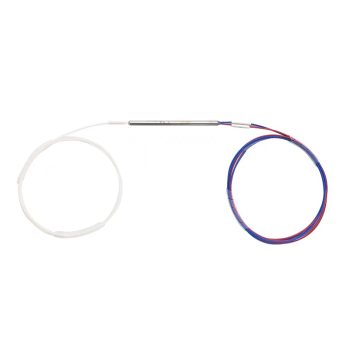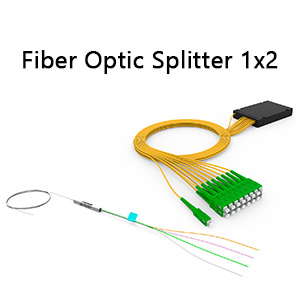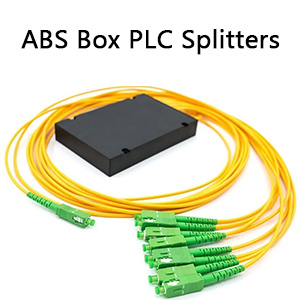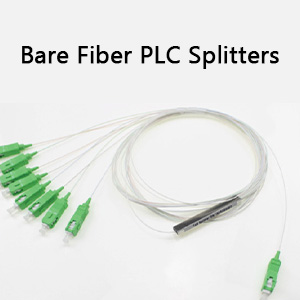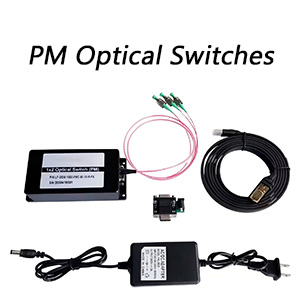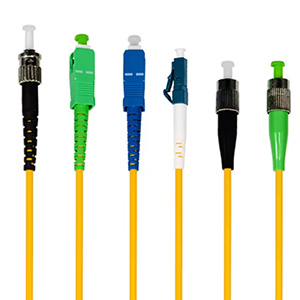Are you looking for ways to boost your optical network’s capacity without overhauling your infrastructure? Fused Wavelength Division Multiplexing (WDM) is the key technology driving next-generation fiber optic networks. Whether you’re in telecommunications, data centers, or fiber-to-the-home (FTTH) applications, Fused WDM modules are at the heart of network optimization. In this guide, we’ll take you through everything you need to know about Fused WDM technology, including its working principle, applications, and why Fiber-Life’s 1×2/2×2 1480/1550nm Fused WDM modules are the best choice for your network.
What is Fused WDM and How Does It Work?
Fused Wavelength Division Multiplexing (WDM) is a game-changing technology that enables multiple optical signals to be transmitted over a single fiber. This approach uses different wavelengths (or channels) to carry data simultaneously, significantly increasing the capacity of your network without the need for additional fibers.
At the core of this technology lies the Fused Wavelength Division Multiplexer (Fused WDM). These passive optical devices either combine or separate optical signals based on their wavelengths. The process is based on fusion-splicing, where two or more fibers are fused together to allow signals to be combined or separated.
Combining and Splitting Signals with Fused WDM
- Multiplexing (Combining): When combining signals, a 1×2/2×2 Fused WDM module takes signals from different wavelengths—such as 1480nm and 1550nm—and transmits them over a single fiber. This dramatically increases the fiber’s data capacity.
- Demultiplexing (Splitting): When separating signals, a Fused WDM module splits a combined wavelength signal into its original components. This allows each signal to be processed separately, enhancing network efficiency.
The versatility of Fused WDM technology—enabling both multiplexing and demultiplexing—makes it an essential part of modern optical communication systems.
The Applications of Fused WDM in High-Speed Networks
Fused WDM technology isn’t just theoretical; it’s widely used in real-world optical networks across various sectors. Its ability to maximize the use of existing fiber infrastructure makes it a highly cost-effective solution. Below, we explore some of the key Fused WDM applications.
1. Telecommunications Networks
Telecommunications providers rely heavily on Fused WDM technology to handle large volumes of data with minimal latency. By using 1480/1550nm Fused WDM modules, operators can combine multiple signals into a single fiber, boosting network capacity and efficiency. These modules are ideal for long-distance fiber optic links where minimizing signal loss is crucial.
-
1×2/2×2 1480/1550nm Fused WDM
Price range: $152.21 through $189.43
2. Data Center Networks
In data centers, where enormous data volumes need to be transmitted between servers and storage devices, Fused WDM technology plays a key role. By enabling high-density data transmission over fewer fibers, it reduces the physical space required for infrastructure and cuts costs. This scalability makes Fused WDM modules essential for optimizing data center networks.
3. Optical Amplifiers
Fused WDM modules are also commonly used in optical amplifiers to enhance signal strength over long distances. These amplifiers are integral in long-haul communications and ensure that signal degradation is minimized, making them an indispensable part of high-speed, high-capacity networks.
4. Fiber-to-the-Home (FTTH) Networks
In FTTH applications, Fused WDM technology allows service providers to deliver multiple services (like video, voice, and data) over a single fiber, reducing infrastructure complexity and lowering costs. 1×2/2×2 Fused WDM modules are particularly useful for maximizing the capacity of these networks, enabling providers to deliver faster and more reliable services to end-users.
Why Fused WDM Technology Is Essential for Modern Optical Networks
The advantages of Fused WDM extend beyond just network efficiency; this technology provides critical benefits that enable high-performance optical communication.
1. Low Insertion Loss
Insertion loss is the reduction in signal strength when it passes through an optical device. Fused WDM technology excels in minimizing this loss, ensuring that your network maintains a strong signal over long distances. Whether you’re using 1480/1550nm Fused WDM modules or other configurations, low insertion loss means more efficient data transmission and better overall network performance.
2. Scalability
One of the most significant advantages of Fused WDM technology is its scalability. As your network grows, you can add more wavelengths to the existing fiber infrastructure without needing to lay additional fiber. This ability to easily expand capacity makes Fused WDM modules highly adaptable to future demands.
3. High Stability and Reliability
Whether you’re dealing with harsh outdoor environments or high-traffic indoor networks, Fused WDM modules offer high stability and reliability. These modules maintain consistent performance, ensuring that your network runs smoothly even in the most challenging conditions.
4. Cost Efficiency
With Fused WDM technology, you can maximize the use of your current fiber infrastructure, reducing the need for additional fiber installations. By allowing multiple signals to travel over the same fiber, Fused WDM modules help you significantly reduce operational costs, making it a cost-effective solution for both new builds and network upgrades.
How FiberLife Fused WDM Modules Stand Out
At FiberLife, we offer high-performance Fused WDM modules that are engineered to meet the demanding requirements of modern optical networks. Our 1×2/2×2 1480/1550nm Fused WDM modules provide several distinct advantages:
1. Optimized for High-Capacity Networks
Our Fused WDM modules are designed for high-capacity applications, ensuring that your optical network operates at peak performance. Whether you need to combine multiple signals into one fiber or split a combined signal, our Fused WDM technology ensures your network can handle large amounts of data without performance degradation.
2. Exceptional Performance and Reliability
Our Fused WDM modules provide excellent performance, featuring low insertion loss, high isolation, and high temperature stability. These features ensure that your network runs efficiently, even in demanding conditions. We provide 1×2/2×2 1480/1550nm Fused WDM modules that excel in both long-distance transmission and dense data environments.
3. Flexible and Scalable Solutions
Our range of Fused WDM modules offers flexibility to meet a variety of network designs. Whether you’re looking for 1×2 Fused WDM or 2×2 Fused WDM configurations, we have the right solution to fit your needs. As your network grows, these modules can be easily scaled to accommodate more wavelengths, ensuring long-term performance.
4. Cost-Effective Networking
By using Fused WDM technology, you can optimize the use of your fiber infrastructure and reduce the costs associated with network expansion. Our Fused WDM modules provide a cost-effective way to increase network capacity, improve data speeds, and future-proof your infrastructure without the need for additional fiber installation.
Conclusion
As the demand for faster, more efficient optical networks continues to grow, Fused WDM technology plays a crucial role in optimizing network performance. By utilizing Fused WDM modules, you can maximize fiber capacity, reduce costs, and ensure your network is scalable for future demands.
At FiberLife, we offer high-quality 1×2/2×2 1480/1550nm Fused WDM that deliver exceptional reliability, performance, and cost-efficiency. Whether you’re designing a new network or upgrading an existing one, our Fused WDM technology is the ideal solution for taking your network to the next level.

